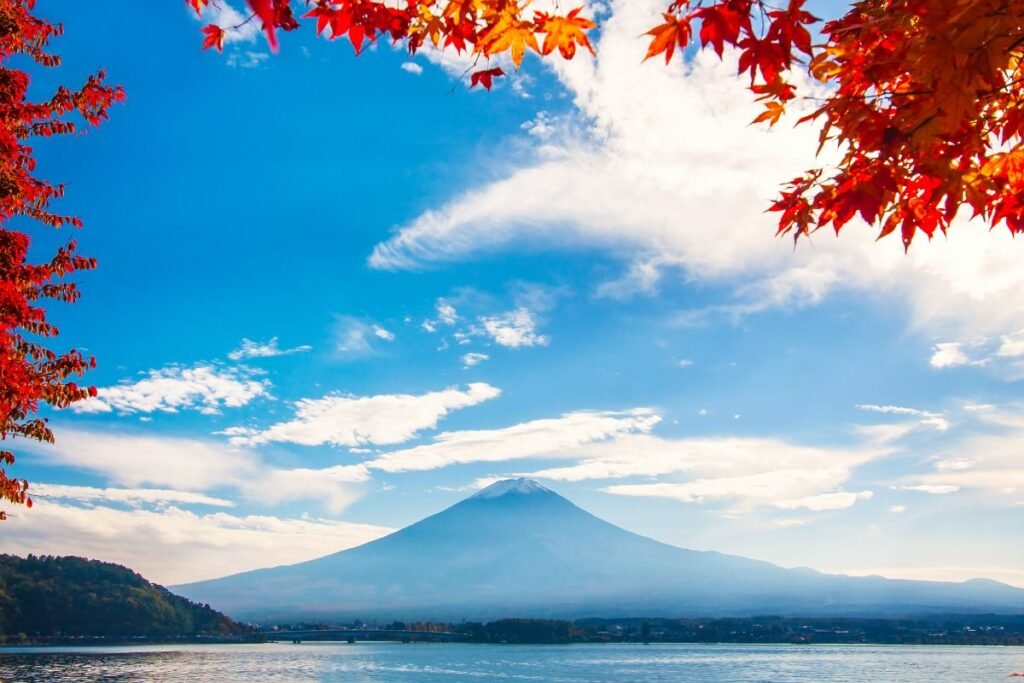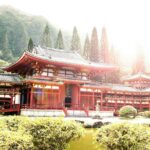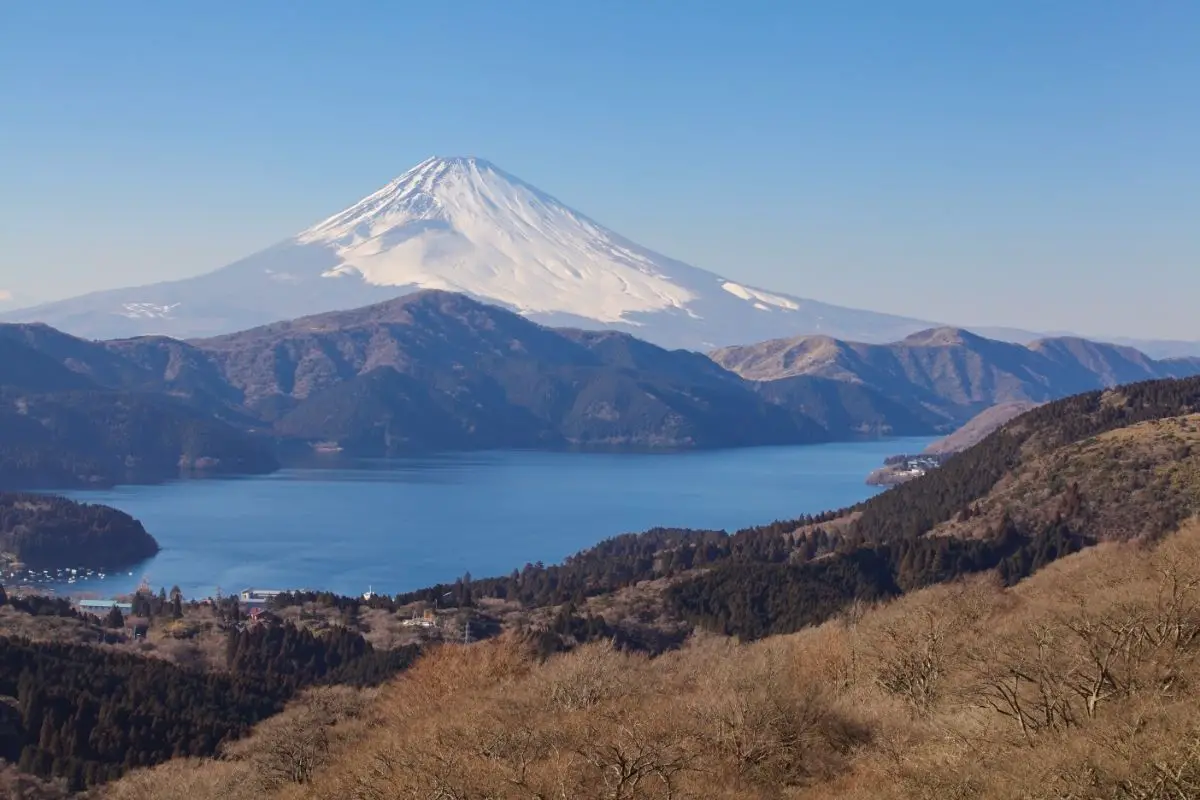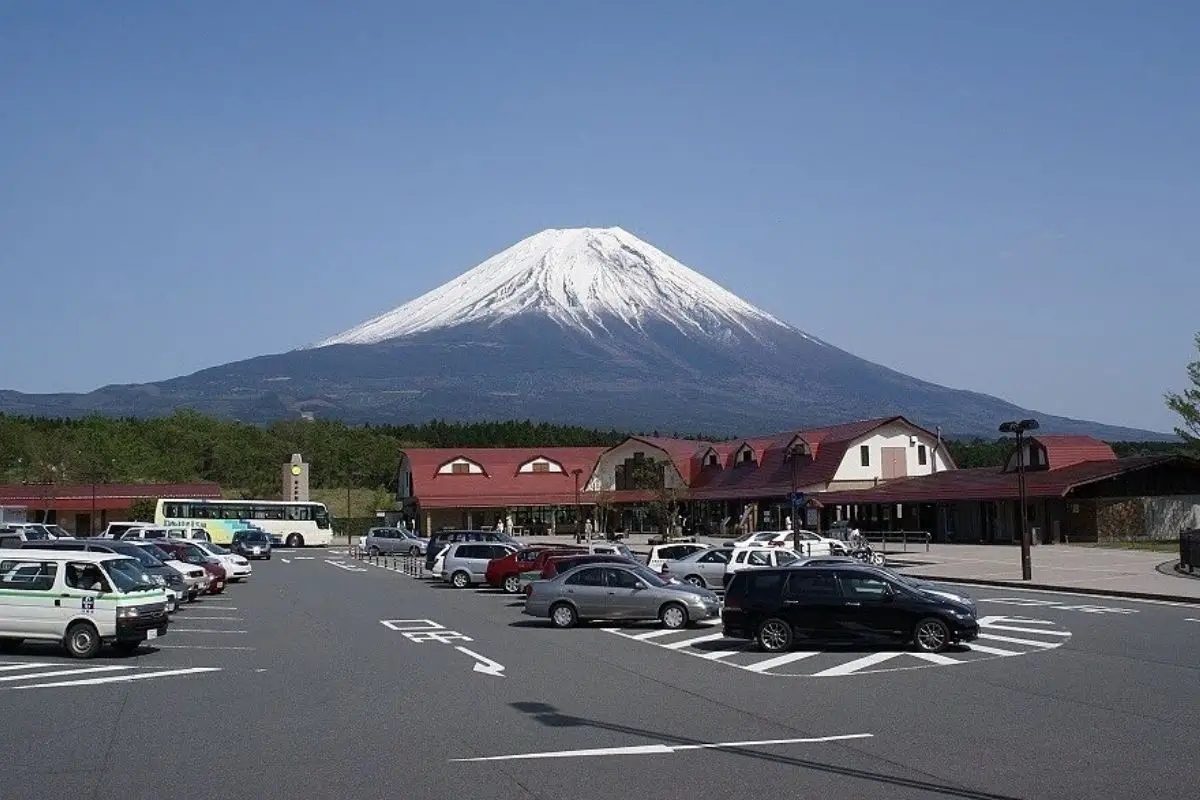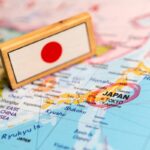The landscape of Japan is dominated by dazzling peaks and valleys, with over 70% of the country covered in mountains. For many visitors to Japan, this might come as a surprise!
Although Mount Fuji might be the most iconic mountain the island has to offer, it’s just one of the many stunning peaks worth visiting.
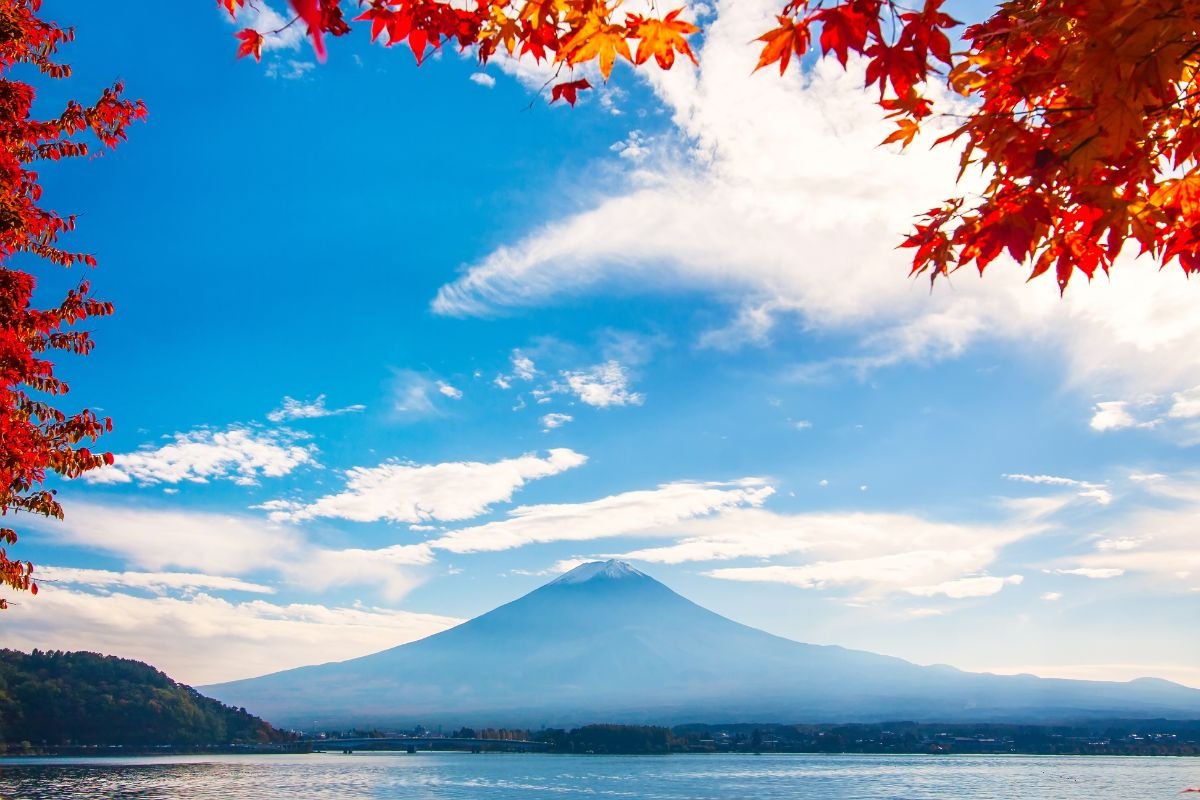
From strenuous hikes to peaceful cable car journeys, the mountains of Japan are a diverse visitor attraction. Mountains stretch across all the main islands of Japan, and these landmarks are often cultural hubs, as well as natural wonders.
Discover 10 of the most breathtaking Japanese mountains to visit with our complete guide.
1. Mount Fuji
Mount Fuji is one of the most iconic images of Japan, a mountain known for its stunning symmetry and perfectly snow frosted peak. Mount Fuji is the highest mountain in Japan, towering an incredible 12,389 feet above sea level.
Located 62 miles southwest of Tokyo, on a clear day, you can spot the imposing mountain from the city.
Mount Fuji is considered one of Japan’s Three Holy Mountains, and is a UNESCO World Heritage Site. Hikers can explore Mount Fuji during the summer months, and the summit is roughly a 5-hour hike.
But you can admire the silhouette of Mount Fuji throughout the year, as it’s just a bus journey away from Tokyo.
2. Tateyama/Mount Tate
Mount Tate, also known as Tateyama, is the second of the Three Holy Mountains. Standing at almost 9,892 feet, the Tateyama mountain is a long and jagged multi-peak range that appeals to hikers.
At the base of Mount Tate is Tateyama town, which visitors can access from Toyama Prefecture. From Tateyama, public transport can take you part way up the mountain, where you can stop and admire the views, or take a cable car to explore the towering peaks.
Or you can tackle one of Mount Tate’s three summits, as there are excellent hiking trails across the mountain.
3. Mount Haku
The third of Japan’s Three Holy Mountains, Mount Haku is a dormant stratovolcano on the island of Honshu. During summer, hikers can enjoy exploring the meandering paths that lead through the blooming mountain face.
In winter, soak up Mount Haku from a distance, as the snow covered peak becomes incredibly picturesque.
Mount Haku last erupted in 1659, and the quiet slopes have become abundant with nature. The well marked hiking trails take a relaxing route through the natural growth.
4. Mount Mitake
It takes less than two hours to reach Mount Mitake by rail from Tokyo, making it one of the most accessible mountains in Japan. Standing at 3,048 feet, Mount Mitake is also an easier climb, and a gorgeous destination for amateur hikers.
For an even easier day trip, take the cable car halfway up the mountain face.
As well as stunning natural views, Mount Mitake is home to an impressive Shinto shrine, which is another visitor attraction.
5. Mount Takao
More than 2.5 million visitors a year visit Mount Takao, thanks to the multiple hiking trails that cover the smaller mountain. It’s just an hour away from the city of Tokyo, and for a quicker trip, you can even take a cable car to the summit.
From the peak, Mount Takao offers views across to Mount Fuji.
If you do visit Mount Takao, watch out for tengu! These bird-like Japanese folk legends are said to protect the forest.
6. Mount Daisen
For many years, visitors were restricted from accessing Mount Daisen. This was regarded as an immensely holy place, with a Buddhist Temple founded on the slopes in 718 AD.
Until the Edo period, Daisen was only accessible to monks of the Daisen-ji temple.
Nowadays, hikers are welcomed on the mountain. The climb is well marked, with clear paths to accessible peaks. In winter, visitors flock to Mount Daisen for exceptional skiing.
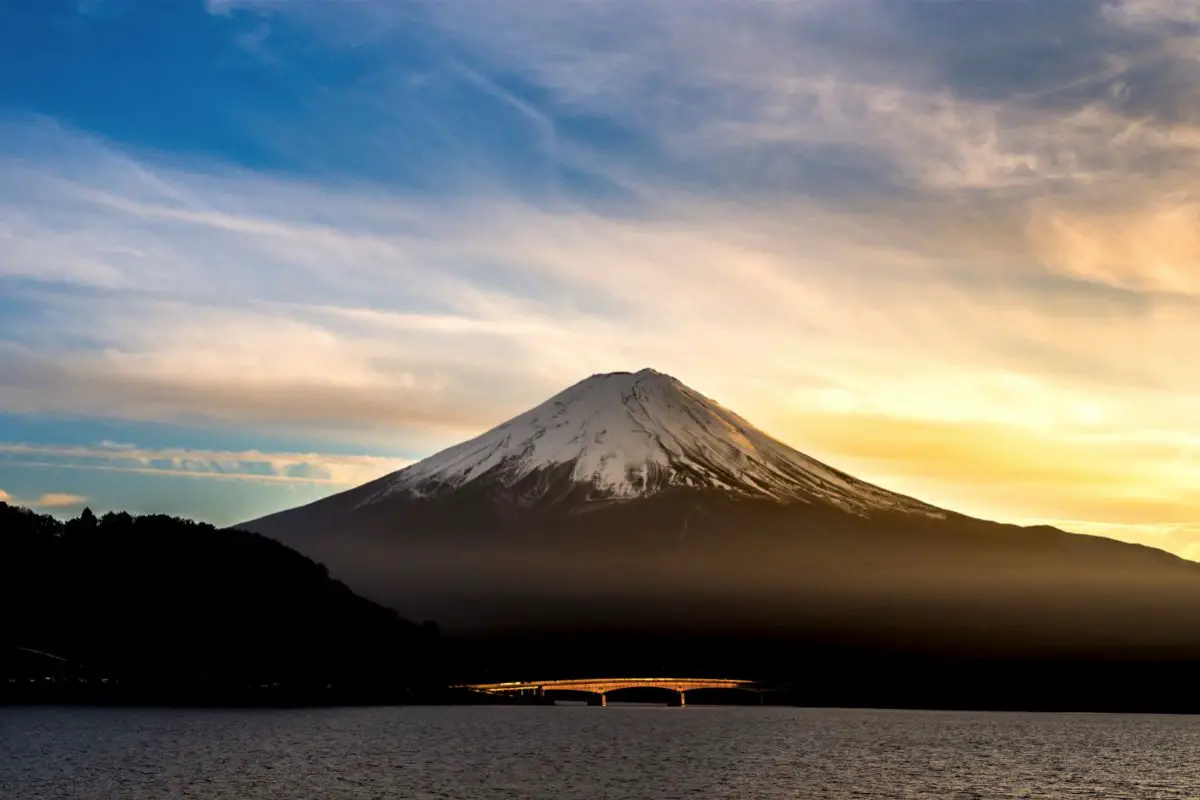
7. Mount Yari
Mount Yari is marked by its distinctive jagged peak. It resembles a knife, thrust through the heart of the mountain to strike the sky. And at 10,433 feet, it’s one of the tallest mountains in Japan.
Mount Yari is found in the Hida Mountains, otherwise known as the Japanese Alps. It’s a long way to the top, and there are several routes to travel (but expect crowds during the summer hiking season). In fact, it’s such a long climb, that visitors are expected to camp overnight.
8. Mount Kita
The second-highest mountain in Japan, the imposing summit of Mount Kita stands at an impressive 10,476 feet. Unsurprisingly, this makes it incredibly popular with the serious hikers who visit Japan.
The multiple trails take hikers through snow coated valleys, over wild rocky ridges, and past the alpine plants that grow in abundance. With so many different trails and views, Kita-dake is a mountain to tackle over and over again.
9. Mount Yoshino
The soft pink clouds of blooming cherry blossoms are an iconic feature of Japan, and the slopes of Mount Yoshino are covered in the breathtaking buds.
Visitors flock to this UNESCO World Heritage Site in Spring, when the trees start to flower, and the mountain comes alive with color.
Don’t worry if you miss the cherry blossom season — Mount Yoshino is still worth a visit for its numerous Shinto shrines.
10. Mount Hakodate
An inactive volcano in Hakodate, Hokkaido, Mount Hakodate is known for the scenic views it grants across the bay and city.
A regular cable car service makes these views incredibly accessible, with 1,559,000 visitors riding the Mt. Hakodate Ropeway every year.
At the summit of Mount Hakodate you’ll find more than just the views. There are shops and tearooms to stop at for a quick refresh, before you begin the journey down.
Final Thoughts
The mountains of Japan have provided visitors with scenic views, challenging hikes, and places to find a touch of peace and serenity for centuries. For modern visitors to Japan, the diverse mountain ranges still offer a breathtaking attraction.
From short hikes just a train journey outside Tokyo, to overnight stays in wild volcanic regions, Japanese mountains are a must-see for any traveler.

